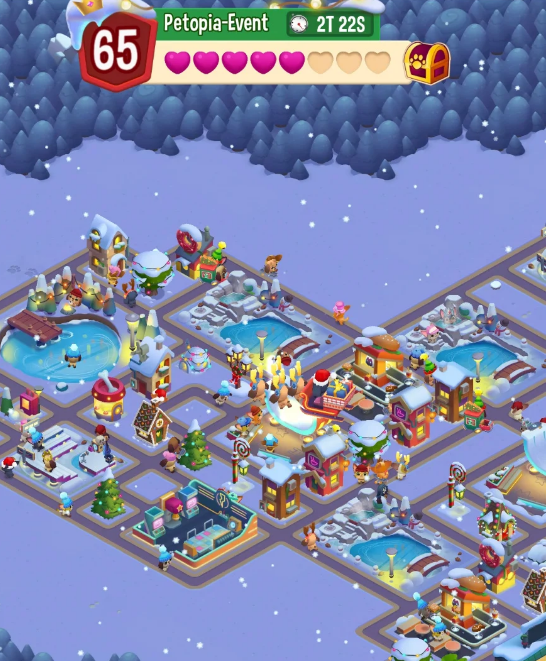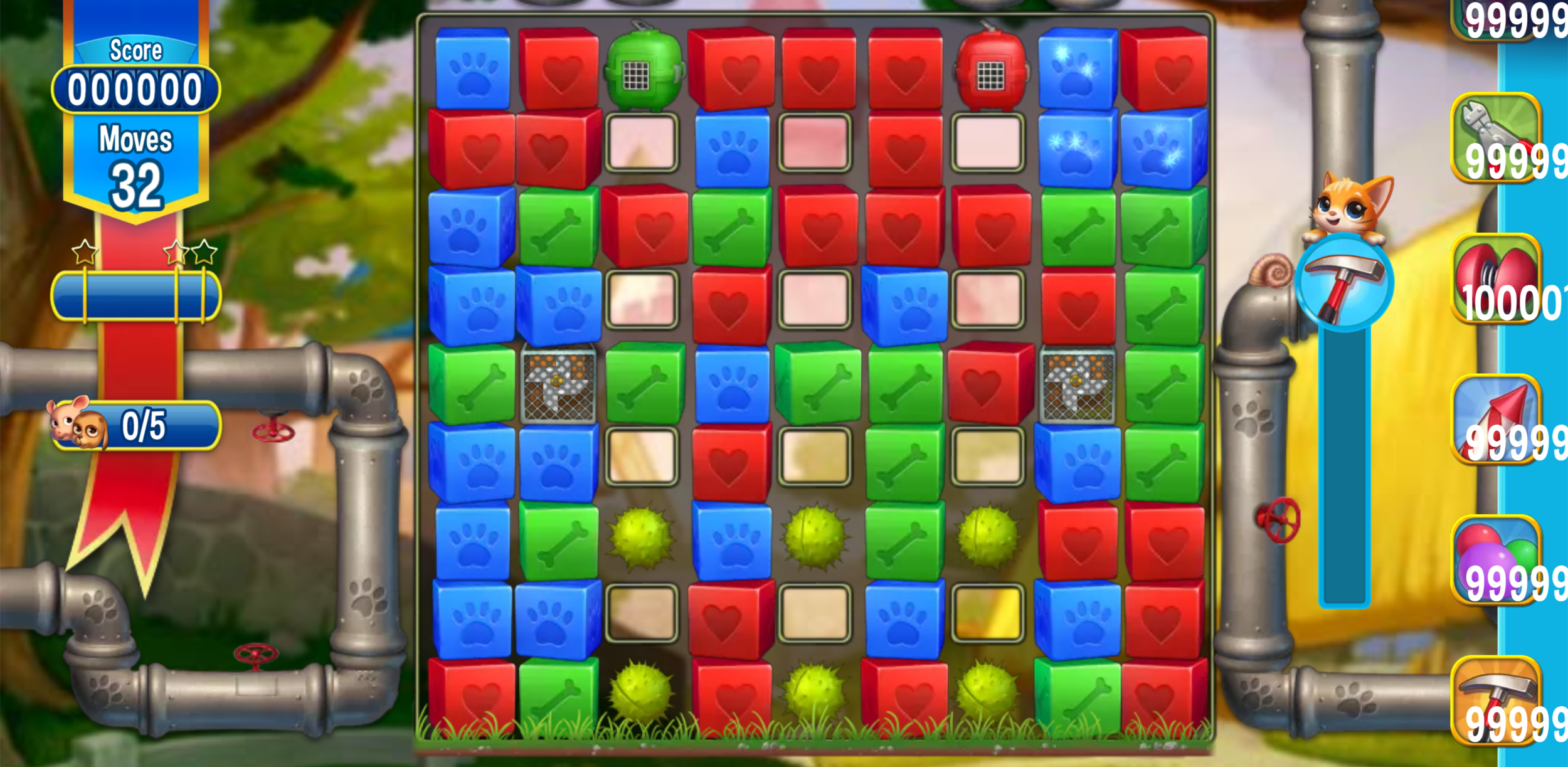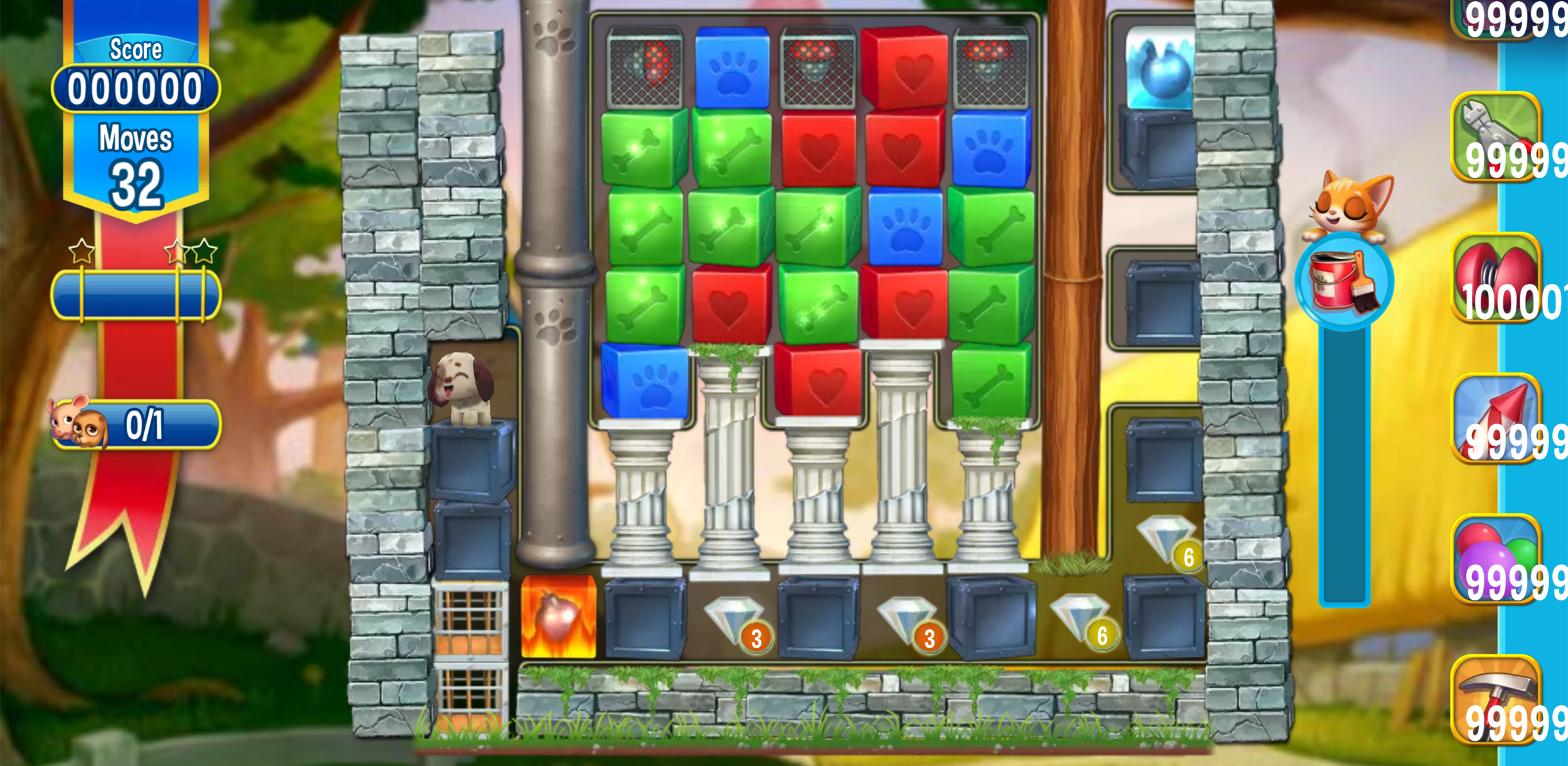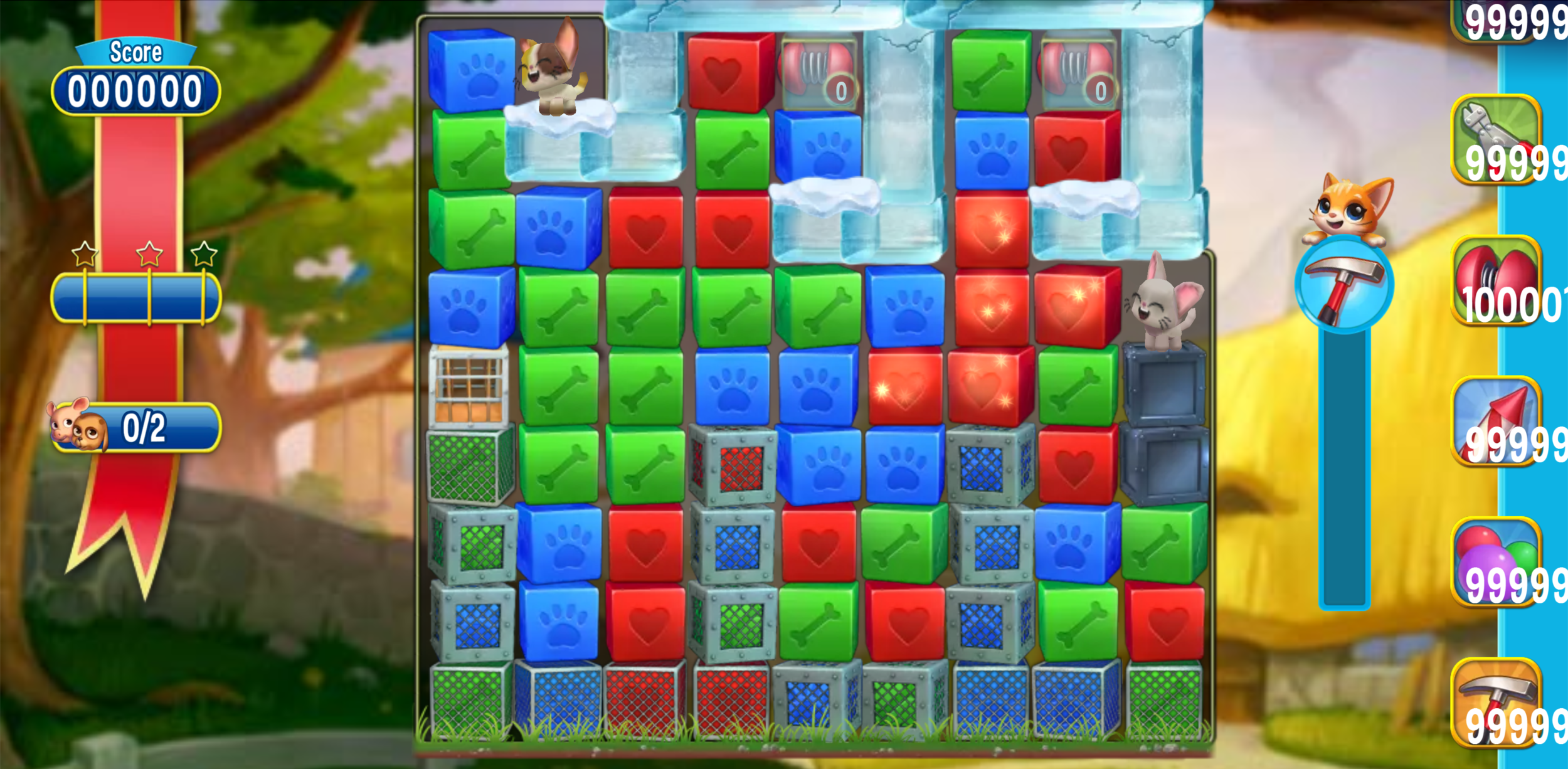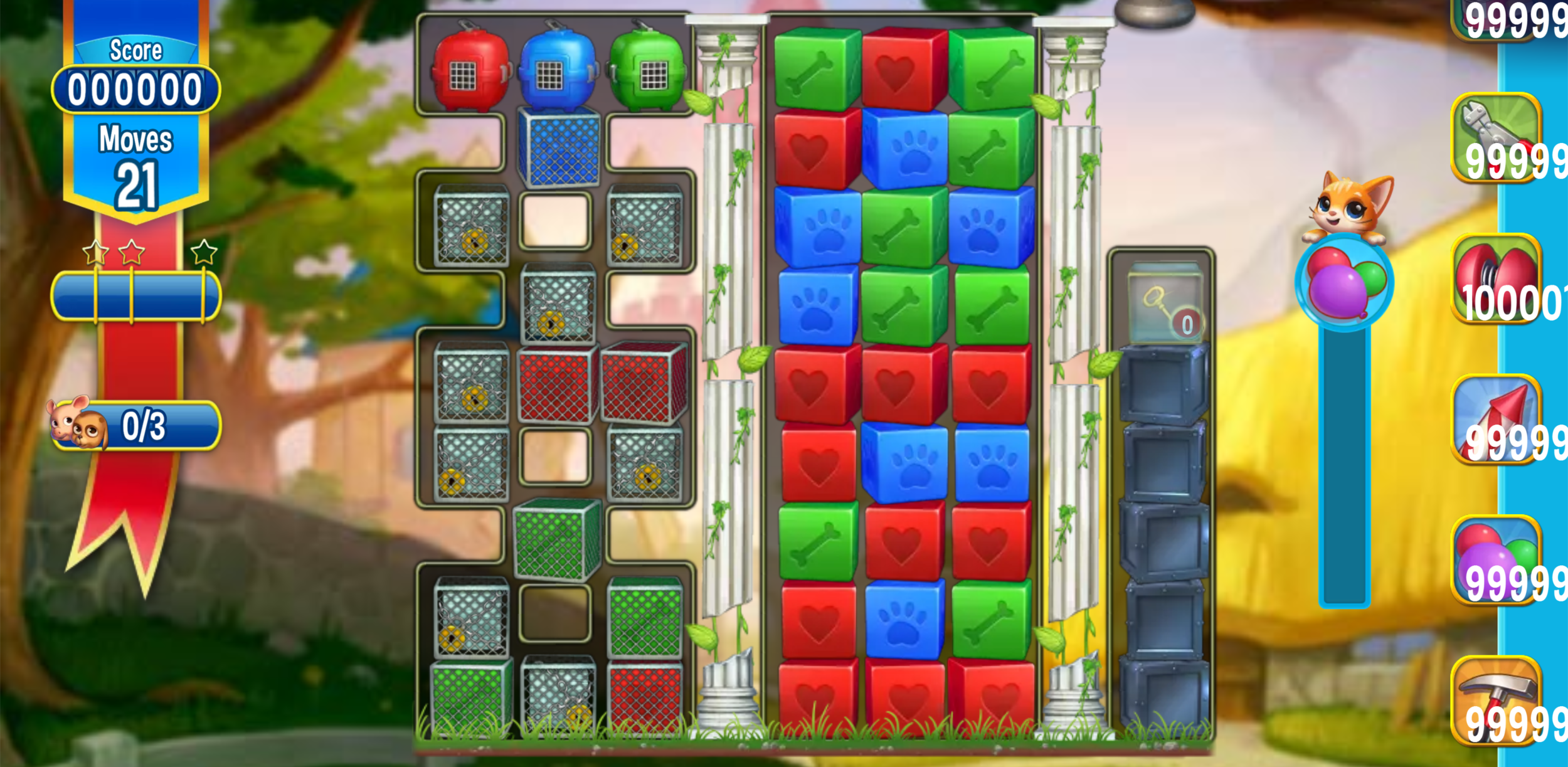Pet rescue saga
I have created new levels for Pet Rescue Saga for the end of content-players. Apart from this I analyzed data from players, to tweak older levels. I also worked on new game modes and blockers. We released a new game mode called Collection-mode, where the goal is to collect designated elements in the level.
Pet Rescue Saga is a clicker-game, which means that you click matches, unlike in Candy Crush, which is a switcher-game, you switch places to create matches. Also, unlike Candy Crush, you can’t create boosters with bigger matches. Instead, we have what is called a “Rechargeable Booster”, a booster that is chosen by the designer based on the level. Bigger matches give you more charge.
Because of these differences PRS has a bigger focus on creating puzzles. Also, PRS has scripting, which allows me as a designer to have more control over what happens in the level.
PRS has five different game modes; Classic, Rescue, Score, Hybrid and the new one called Collection.
In Classic you only have the blocks on the board, with no refill. The goal is to clear the board of blocks.
Rescue is like Classic, but instead of clearing the board, the goal is to free the pets on the board.
In Score the board refills, unlike the previous modes, and the goal is to free the pets.
Hybrid has partial refill, based on a percentage, where the goal is also to free the pets.
Collection the board refills, like in Score, but the goal is to collect a designated element.
The player should experience varied gameplay in the level, and shouldn’t feel that it is monotonous or be frustrating to play.
Often I avoid this by having multiple goals that the player needs to clear. The whole game board should always have a purpose and feel necessary, and not just tacked on to fill out the board.
I like to design both complex scripting heavy and more classic basic levels, but these philosophies stand true no matter the type of gameplay I create for the level.
In the level next to this paragraph there are multiple different challenges. Snipe the vined parts and work with the freed blocks. The butterflies require a certain number of blocks on it’s color to be cleared, so you don’t only have to focus on hitting the target with the blasters, you also have to manage these butterflies.
working on an older game
PRS has been out for almost ten years now and has over 5000 levels, so our design conventions have changed during this time. Because of this, earlier levels might use old conventions that we’ve moved away from.
To fix the progress through such stretches we need to refractor the Saga, which is what we call the level map.
We’ve also decided to entice new players by remaking the first levels of the game. I’ve been in charge of one of these tracks, which I named the fast-paced track. The idea is to make players interested in the game by introducing new things at a rapid pace.
Apart from working on level design for Pet Rescue Saga, I also helped the game design team on events and meta-aspects for the game. For example everyone helped out on the recent addition of Petopia to PRS. A event where players build a town between levels.
We’ve also released a Chistmas-themed variant of Petopia with some updates such as a Christmas tree with presents that the players earns by completing quests. These presents were then opened on Christmas and contained boosters that the players could use in levels.
closing thoughts
Designing the Levels
Based on the game mode the gameplay of the level is widely different. Classic and Rescue levels are often more alike a typical puzzle where every move is important and needs to be planned.
Score, Hybrid and Collection can be a bit more explosive and unique because of the refill, which I can have full control over thanks to the scripting conditions.
I feel it’s very important that even if the player loses a level, the loss happens with the end in sight, to avoid as much frustration as possible. I want them to feel that it’s possible and that they want to try again.
But they should never just feel that they’re going through the motions, waiting for the part where they failed. This can be avoided with having interesting set-ups or with some randomization.

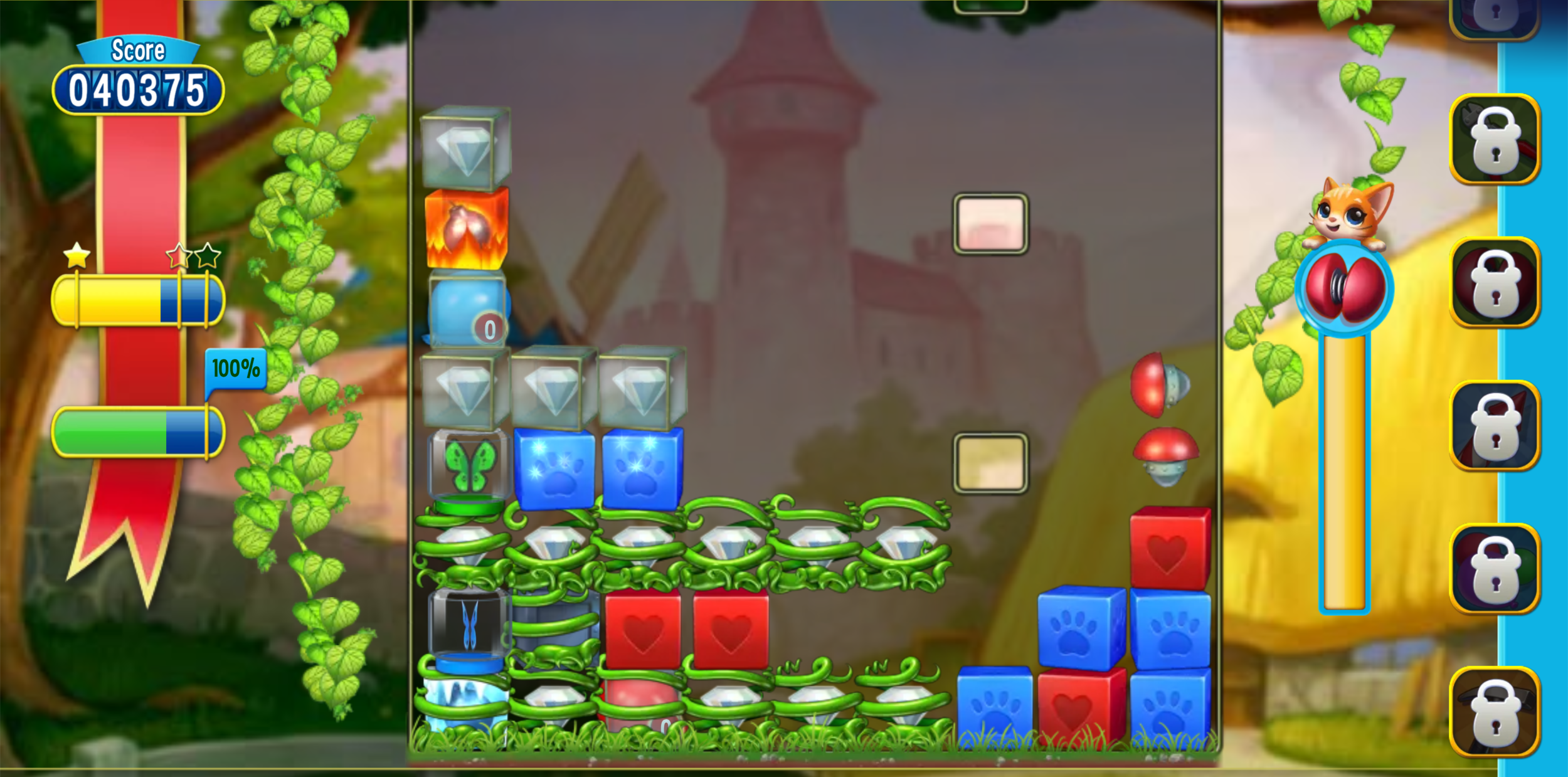
PRS has a mechanic called sliding. If a column is empty of blocks, the one next to it slides in it’s place. This is something you always have to keep in mind. For example, on the level I just talked about there are small sections surronded by vines. These are stuck in place until they are released, so the small sections in between have a high chance to slide. We use soft and hard voids to better control sliding in most levels. Blocks can pass through soft voids but not through hard voids.
To signal the differences we decorate over hard voids to show that those sections can’t be passed through. We often use the pipe-asset to show where special blocks spawn, for example bombs or blasters.
My time with Pet Rescue Saga has made me better at creating interesting layouts with regards to the constrains of an older game, which is something I can easily apply to other types of games.
I believe my work on Pet Rescue Saga has brought joy to many players, and will for years to come.


